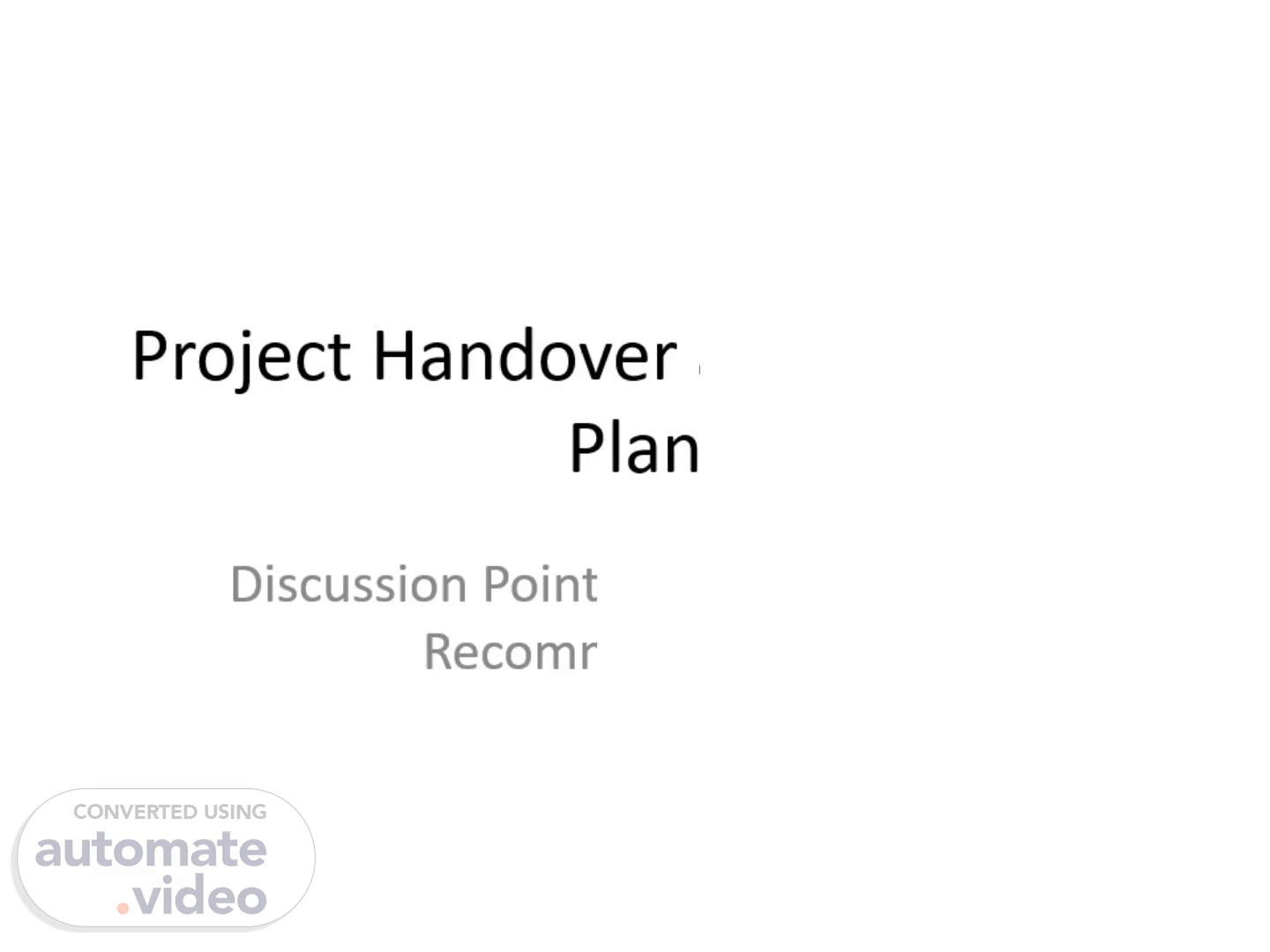Scene 1 (0s)
Project Handover and Execution Plan. Discussion Points, Action Plans, and Recommendations.
Scene 2 (14s)
Points of Discussion. Current projects code base and handover (CTS and other systems) Plan to mitigate risks and improve deliverable quality Believe in Project success: People, Process, Technology.
Scene 3 (34s)
Project Handover Plan. Overview of projects – Brief description of project and team members working Purpose, scope, and goals/ roadmaps Current status and stakeholders Technical details (architecture, customizations, workflows) Functional details (pending tasks, 3rd-party integrations, roadmaps) Operational details (deployment procedures, environment access, code repository details).
Scene 4 (1m 3s)
Handover Timeline. Week 1: Preparation (Update documentation, schedule KT sessions) Week 2: High-Level KT (Project overview, workflows, integrations) Week 3: Detailed Module Walkthrough (Architecture, customizations) Week 4: Validation and Transition (Mock operations, Q&A sessions) Post-KT: Support and Monitoring.
Scene 5 (1m 30s)
Critical Issues and Solutions. Client delays in approvals and sign-offs Clear SLA agreements, frequent check-ins, parallel preparation. Scope creep - Formal change management, milestone sign-offs, clear communication - Integration issues - Early testing, API SLAs, fallback plans.
Scene 6 (1m 56s)
Moderate and Lower Priority Issues. Moderate: - Resource availability and delays - Resource planning, prioritization, flexibility - Documentation gaps - Standard templates, central repository, regular updates Post-go-live customizations - Support agreements, customizations budget, transition plan Lower Priority: - Mobile app issues, performance bottlenecks, cybersecurity - Automated testing, monitoring tools, early security testing.
Scene 7 (2m 26s)
Recommendations and Contributions. Identify core modules and adopt DDD/TDD for better design with best practices with ai & tools Establish coding guidelines, peer review processes, QA involvement Use AI tools for automation (tests, pipelines) and pair programming. Setup Agile processes with sprints and milestones Centralize knowledge sharing with wikis and reusable components.
Scene 8 (2m 55s)
Support Needed. Understand the overall operation from project lead till execution. Understand current project statuses and issues Tools procurement: Jira, Azure DevOps, SonarQube, etc. Manual and automated testing setup Guidance on resource allocation and responsibility segregation Establish escalation and scope management processes.
Scene 9 (3m 22s)
Project Execution Summary. Use Azure DevOps Boards, Repos, Pipelines, Test Plans, Artifacts Sprint execution: planning, development, testing, review, retrospective Role integration with tools (Product Owner, Scrum Master, QA, DevOps) Team size recommendations based on project scale.
